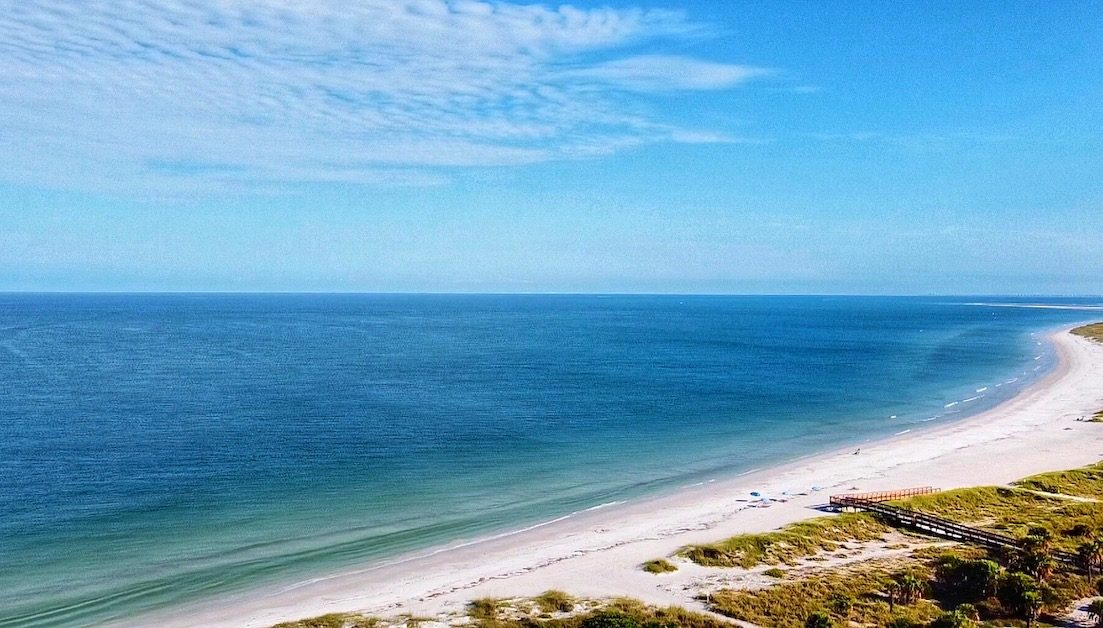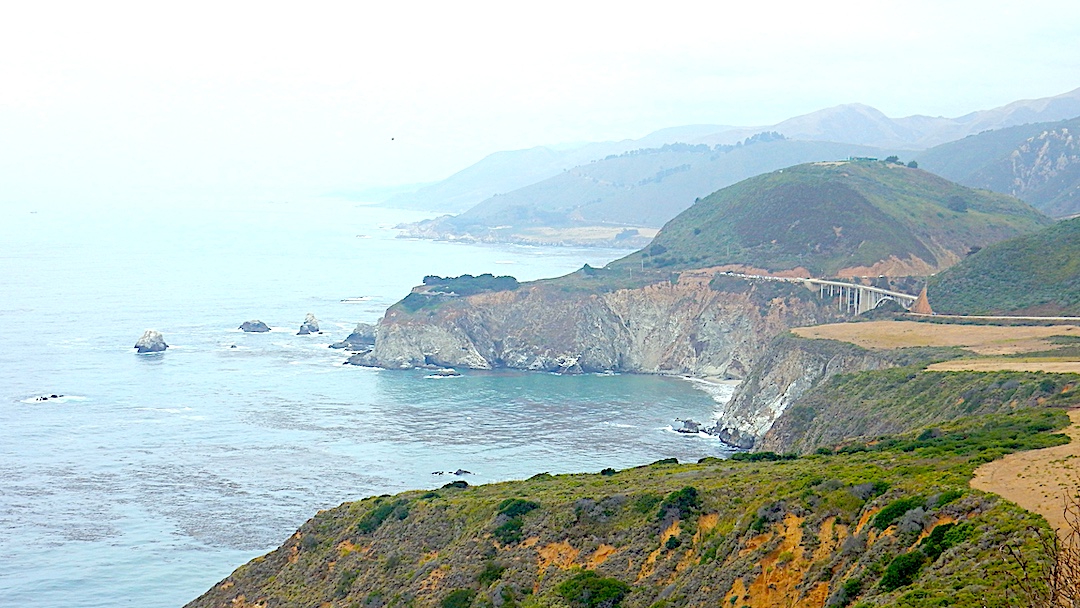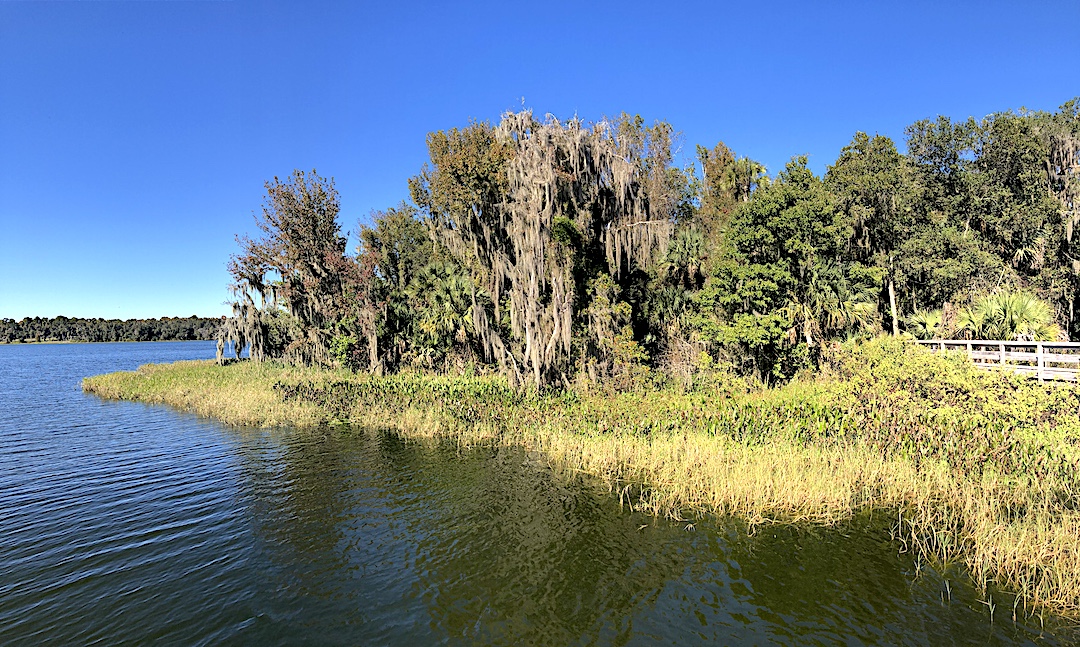On any given day nature unwraps glorious gifts at Fort De Soto Park on Florida’s Central West Coast in Pinellas County. A giant manatee glides through the water close to where you’re swimming. A pelican soars above, then dive bombs the water to fill its gullet with fish for lunch. Dolphins frolic. Stingrays fly through the water inches from the shoreline. (Swimmers alert: do the stingray shuffle as you enter the water).

Explore A Real Fort
Fort De Soto Park has everything for the curious to explore. Obviously, the name gives away the fact an actual fort is here. The Spanish American War-era fort was built to protect Tampa Bay from invaders entering from the Gulf of Mexico. Fort De Soto, named after the Spanish explorer who led the first expedition to Florida, remained active until after World War II, when it was sold to Pinellas County. It reopened as a public park in 1963, and in 1977 was placed on the National Register of Historic Places.
Today, visitors pay a $5.00 per car entrance fee to the park. You can take a self-guided tour of the fort and climb the stairway to the top of the observation deck. The views of the beachfront from there are spectacular. The fort’s weapons batteries are still in tact with eight 12-inch M 1890-MI mortars.


America’s Best Beach
Five islands, or keys, make up Fort De Soto Park totaling nearly 1,200 acres. The beachfront spans more than six miles. This place is so huge and undeveloped it’s rather easy to escape beach crowds and find quiet spaces, especially during sunset. The sunsets here, I think, are the best in Florida.


Beach sand as fine and white as sugar extends to the blue-green Gulf of Mexico. In 2005, renowned coastal scientist Dr. Stephen Leatherman, also known as Dr. Beach, named Fort De Soto’s North Beach “America’s Best Beach.” It finished ahead of some of the best known beaches in the world, including those in Hawaii.
America’s Top 10 Best Beaches— 2005
Fort De Soto Park, North Beach, St. Petersburg, Florida
Ocracoke Island, Outer Banks, North Carolina
Hanalei Bay, Kauai, Hawaii.
Caladesi Island State Park, Clearwater, Florida
Fleming Beach, Maui, Hawaii.
Coast Guard Beach, Cape Cod, Massachusetts.
Coronado Beach, San Diego, California.
Cape Florida State Park, Key Biscayne, Florida
Main Beach, East Hampton, New York
Hamoa Beach, Maui, Hawaii.
(Source: Stephen Leatherman, Ph.D., Laboratory for Coastal Research, Florida International University)

Things To Do
If you’re looking for recreation, Fort De Soto has a wide variety of activities. There’s a 7-mile paved trail for walking and biking, a boardwalk and nature trail, and a dog park. Kayak rentals are available to explore the mangrove waterways— a great way to see manatees and dolphins feeding! Is fishing your thing? There are two places to drop a line: the 500-foot Bay Pier and the 1,000-foot Gulf Pier. Both have food concessions and sell bait and tackle. An 800-foot boat ramp with parking also makes it convenient to launch your own vessel.
For beachcombers, seashells, sand dollars, and driftwood are plentiful, especially after a storm rolls through. Dense sea oats gently sway in the gulf breeze, and a variety of shorebirds glide and walk along the water’s edge. At various times of the year, different bird species migrate to Fort De Soto’s beach so bring binoculars. One time I met a National Geographic photographer who was there to document the winter migration of white pelicans from Louisiana.






There’s so much to do you can make an extended weekend or week-long vacation here. Fort De Soto has a popular campground in the park. The 236-site campground accommodates tents, vans, pop-up campers and trailers under 16-feet. Bookings fill up fast, so make plans— as much as a year in advance— to secure a camp site.
Fort De Soto Park is an experience you won’t forget!

Fort De Soto Videos






One thought on “Make This Florida Island Beach And Historic Fort A Must-See!”